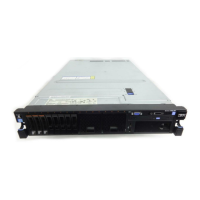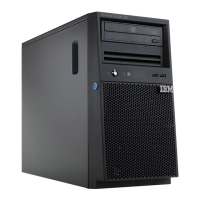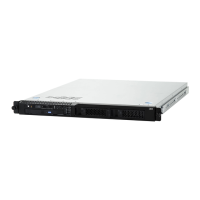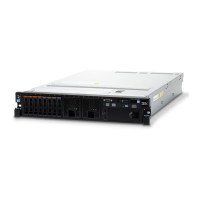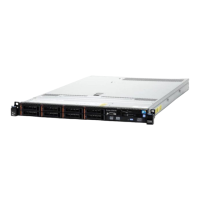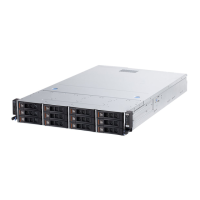v Intelligent Platform Management Interface (IPMI) Specification V2.0 and
Intelligent Platform Management Bus (IPMB) support.
v Invalid system configuration (CONFIG) LED support.
v Light path diagnostics LEDs indicators to report errors that occur with fans,
power supplies, microprocessor, hard disk drives, and system errors.
v Local firmware code flash update
v Nonmaskable interrupt (NMI) detection, generation, and reporting.
v Operating-system failure blue screen capture.
v PCI configuration data.
v PECI 3 support.
v Power/reset control (power-on, hard and soft shutdown, hard and soft reset,
schedule power control).
v Query power-supply input power.
v ROM-based IMM firmware flash updates.
v Serial over LAN (SOL).
v Serial port redirection over telnet or ssh.
v SMI handling
v System-event log (SEL) - user readable event log.
The IMM also provides the following remote server management capabilities
through the OSA SMBridge management utility program:
v Command-line interface (IPMI Shell)
The command-line interface provides direct access to server management
functions through the IPMI 2.0 protocol. Use the command-line interface to issue
commands to control the server power, view system information, and identify
the server. You can also save one or more commands as a text file and run the
file as a script.
v Serial over LAN
Establish a Serial over LAN (SOL) connection to manage servers from a remote
location. You can remotely view and change the UEFI settings, restart the server,
identify the server, and perform other management functions. Any standard
Telnet client application can access the SOL connection.
Using the remote presence and blue-screen capture features
This information provides instructions on how to use the remote presence and
blue-screen capture features.
About this task
The remote presence and blue-screen capture features are integrated functions of
the integrated management module II (IMM2). The remote presence feature
provides the following functions:
v Remotely viewing video with graphics resolutions up to 1600 x 1200 at 75 Hz,
regardless of the system state
v Remotely accessing the server, using the keyboard and mouse from a remote
client
v Mapping the CD or DVD drive, diskette drive, and USB flash drive on a remote
client, and mapping ISO and diskette image files as virtual drives that are
available for use by the server
v Uploading a diskette image to the IMM memory and mapping it to the server as
a virtual drive
Chapter 3. Configuration information and instructions 151

